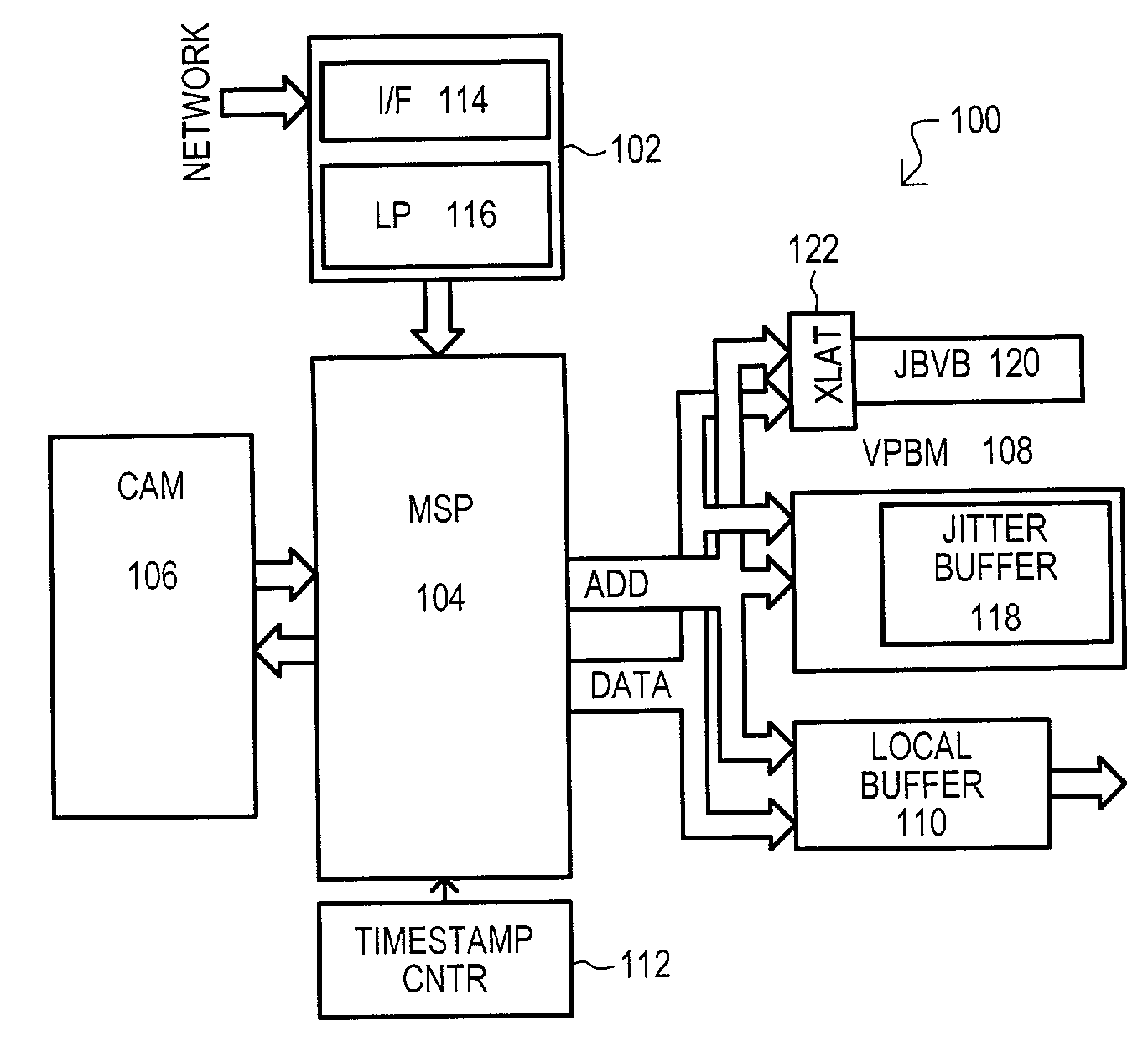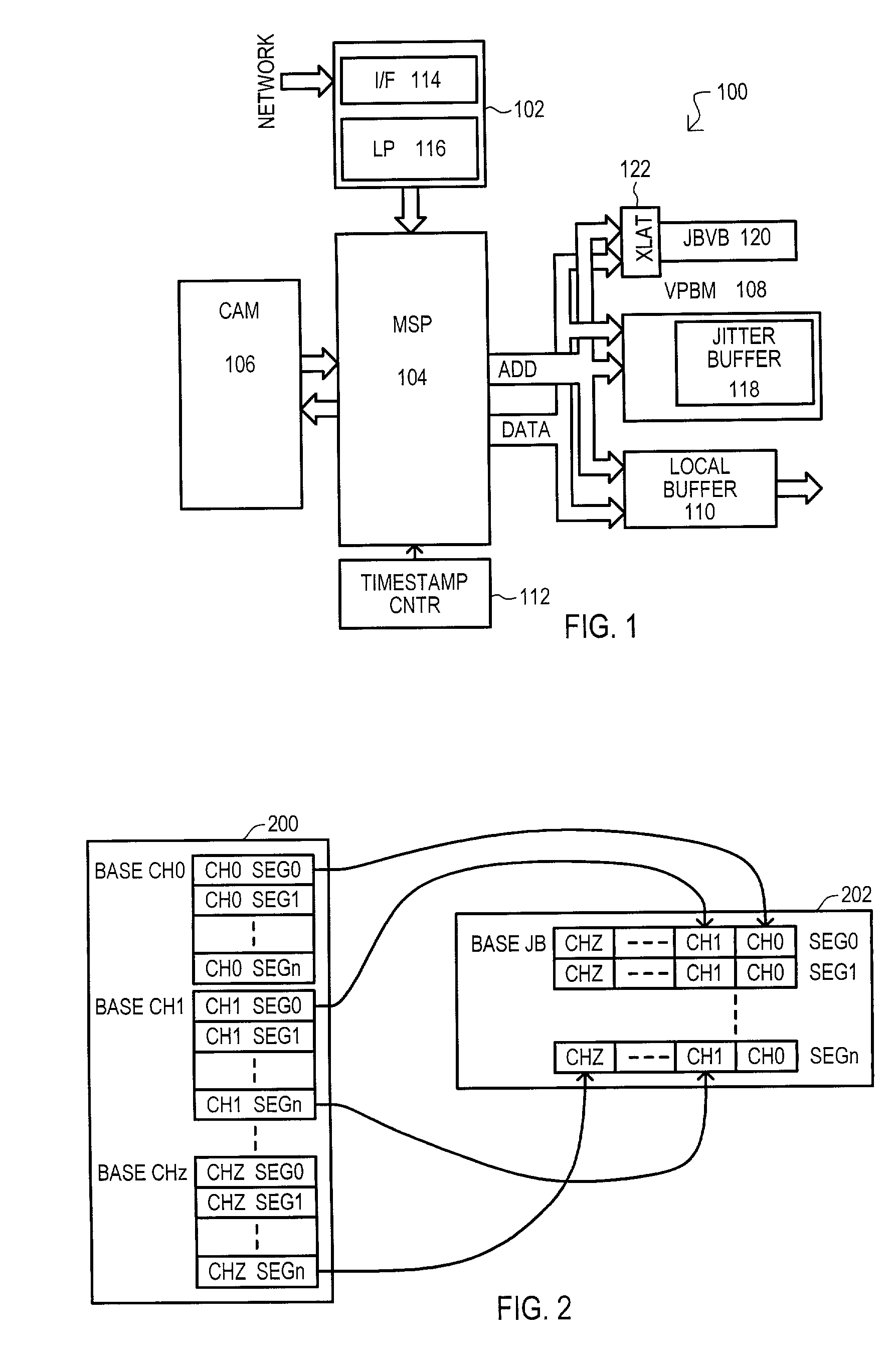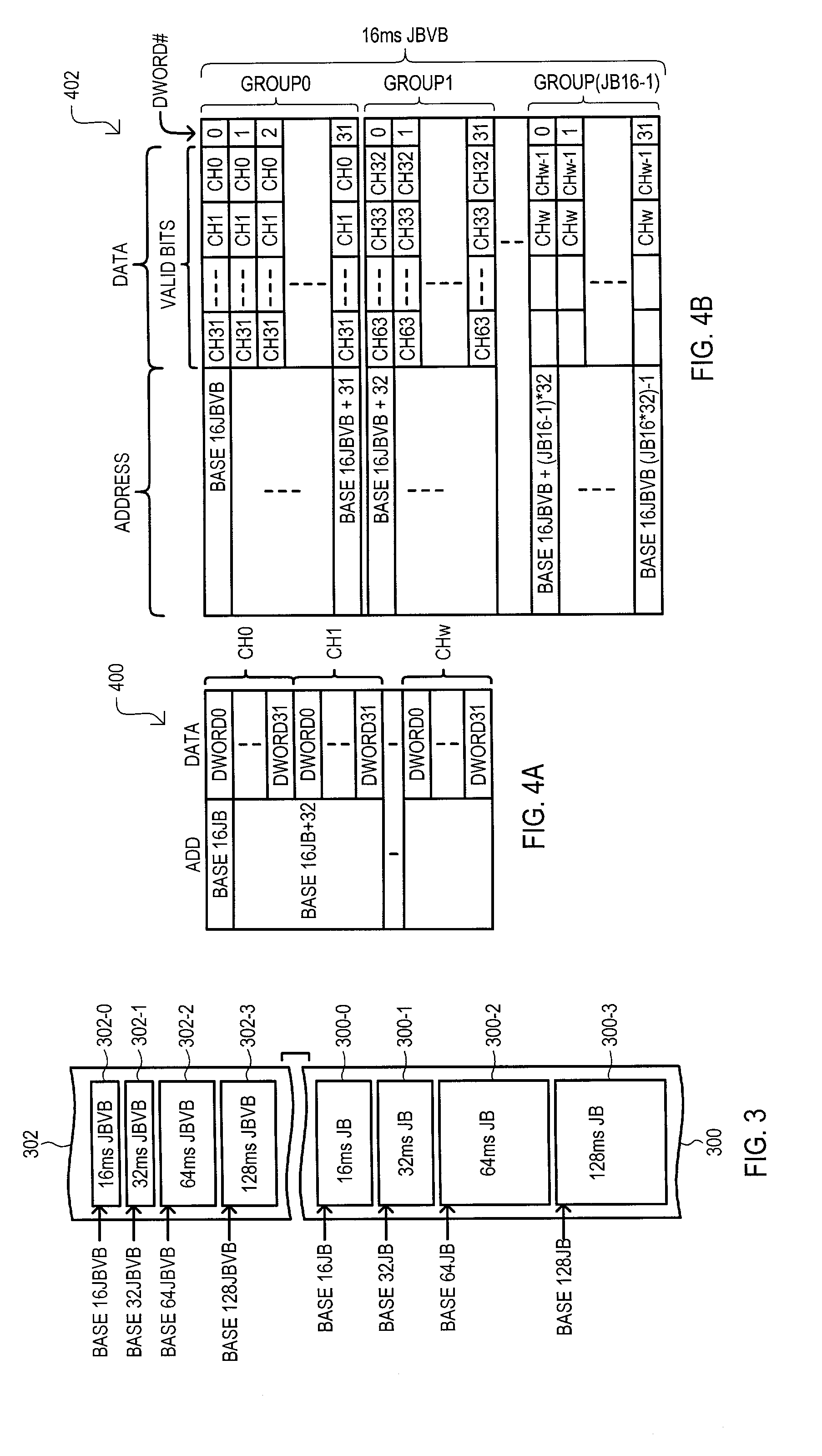Jitter buffer state management system for data transmitted between synchronous and asynchronous data networks
a data network and buffer state technology, applied in the field of network data processing systems, can solve the problems of inefficiency of data transmission over a synchronous network, wasting available bandwidth, and the possibility of different portions of the same voice stream arriving out of sequence,
- Summary
- Abstract
- Description
- Claims
- Application Information
AI Technical Summary
Problems solved by technology
Method used
Image
Examples
Embodiment Construction
[0044]Various embodiments of the present invention will now be described with reference to a number of drawings. The various embodiments may include one or more buffers (e.g., jitter buffers) that can store data from multiple data channels, as well as a corresponding valid data memory (e.g., a jitter buffer state valid bit (JBVB) memory) that can provide a rapid and / or convenient indication of the state of buffered voice data for the multiple voice channels.
[0045]The following describes one particular application for a jitter buffer according to the present invention. The examples shown illustrate a voice over network application. Of course, it is understood that alternate embodiments may process non-voice data, or a combination of voice and non-voice data. Referring now to FIG. 1, a network voice data processing system is set forth in a block diagram and designated by the general reference character 100. A system 100 may include a receive (RX) subsystem 102, a multi-stream processo...
PUM
 Login to View More
Login to View More Abstract
Description
Claims
Application Information
 Login to View More
Login to View More - R&D
- Intellectual Property
- Life Sciences
- Materials
- Tech Scout
- Unparalleled Data Quality
- Higher Quality Content
- 60% Fewer Hallucinations
Browse by: Latest US Patents, China's latest patents, Technical Efficacy Thesaurus, Application Domain, Technology Topic, Popular Technical Reports.
© 2025 PatSnap. All rights reserved.Legal|Privacy policy|Modern Slavery Act Transparency Statement|Sitemap|About US| Contact US: help@patsnap.com



